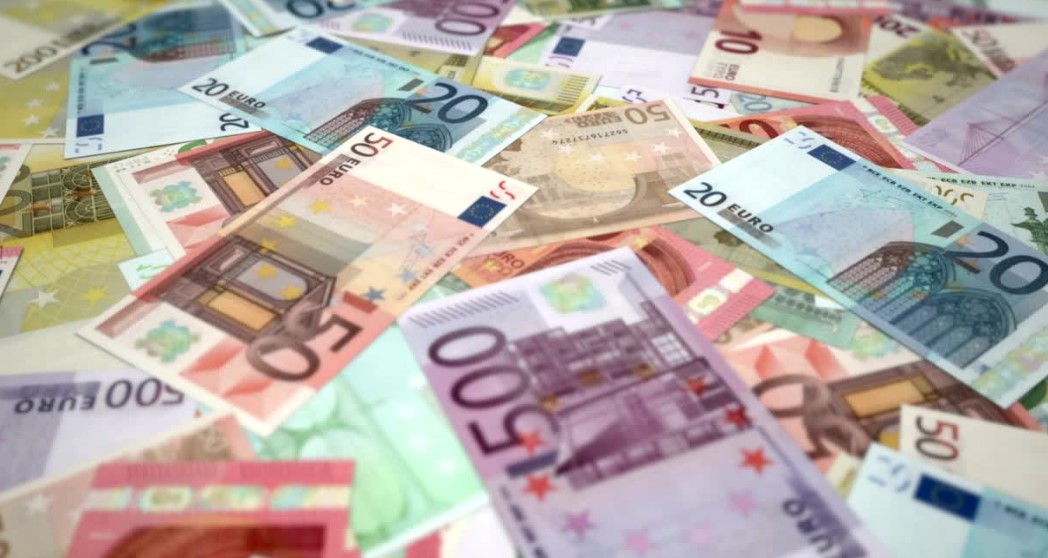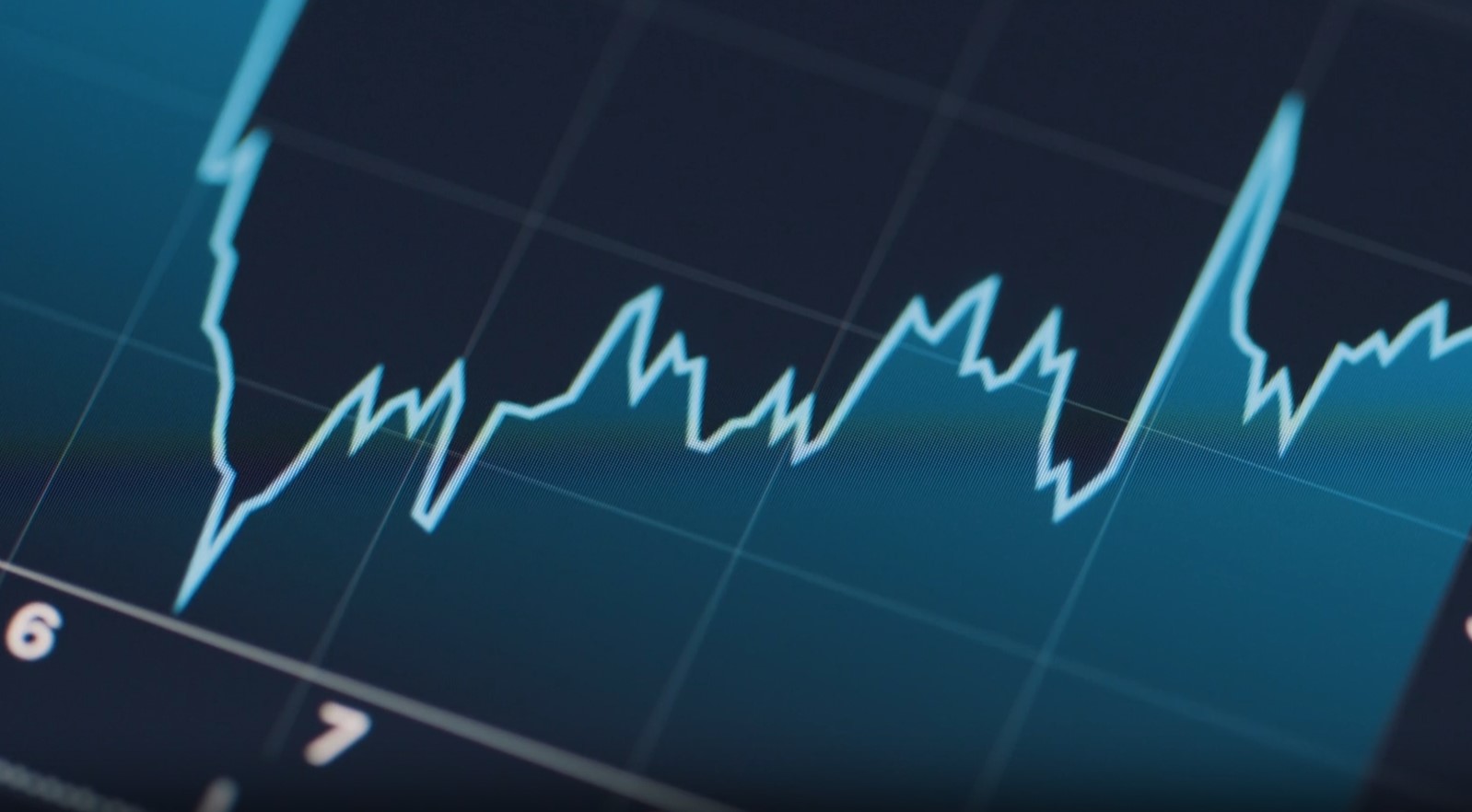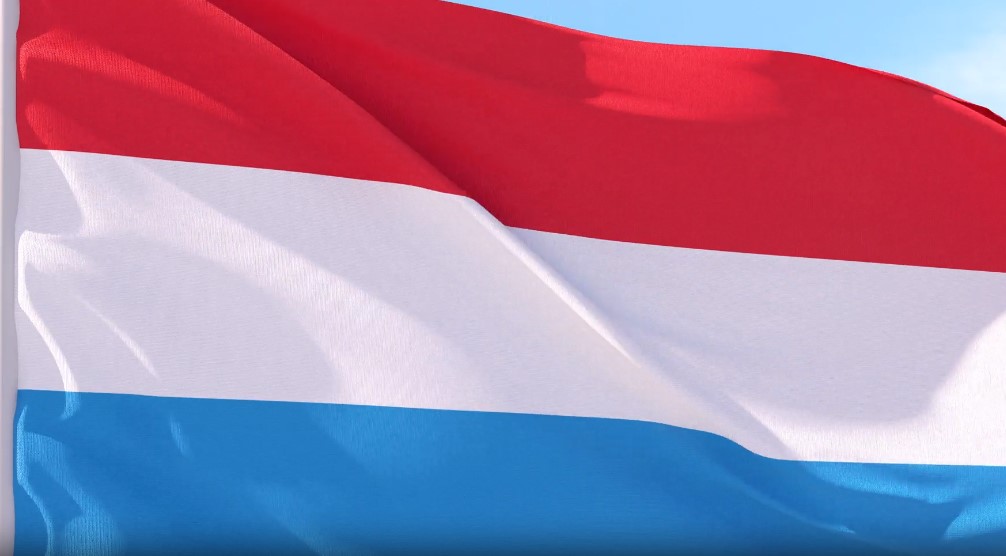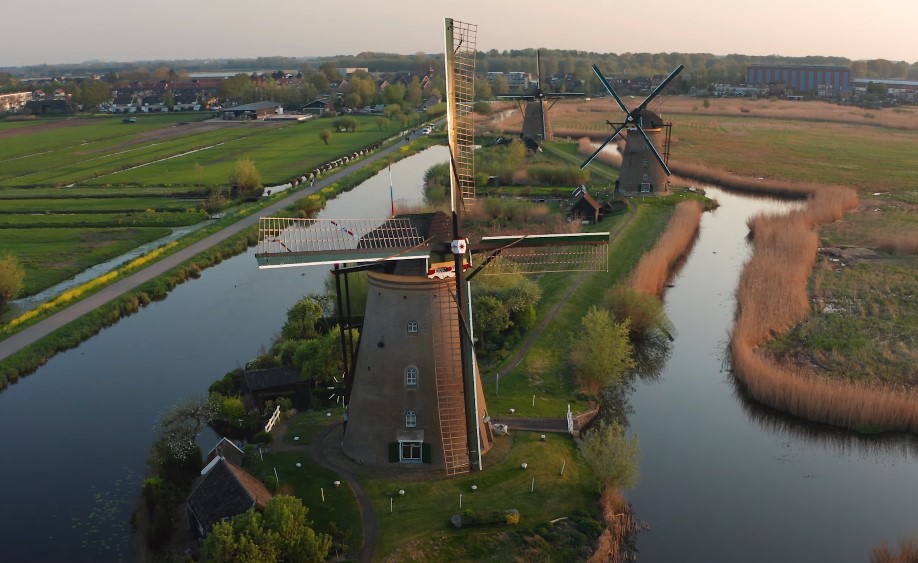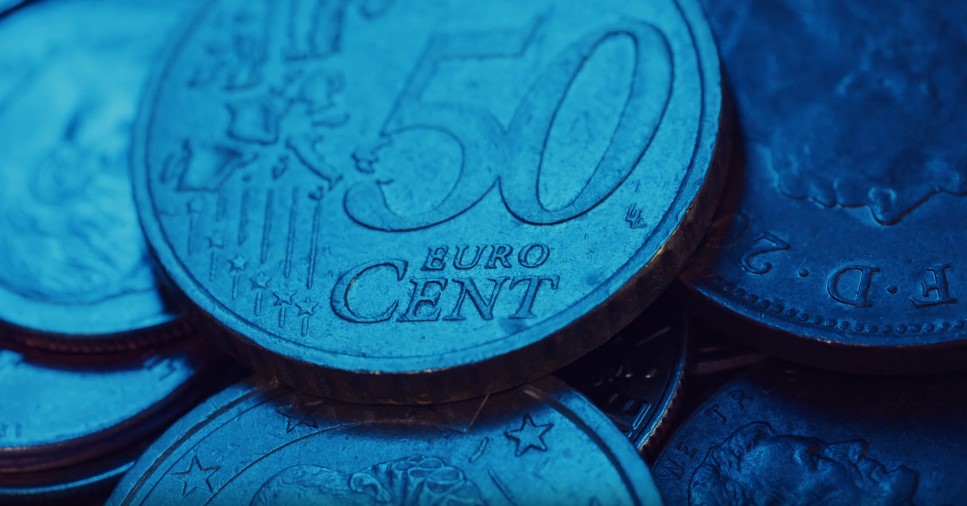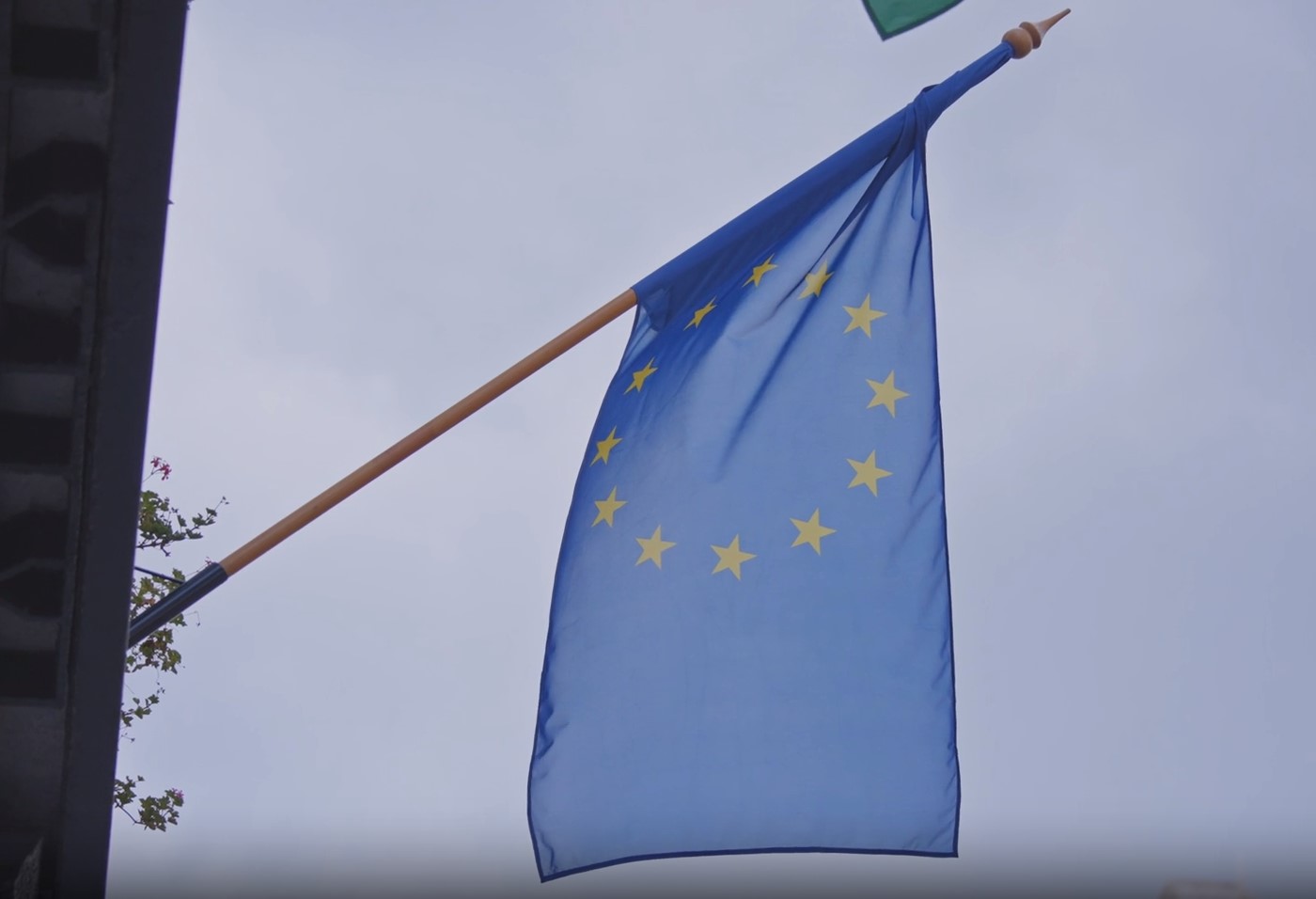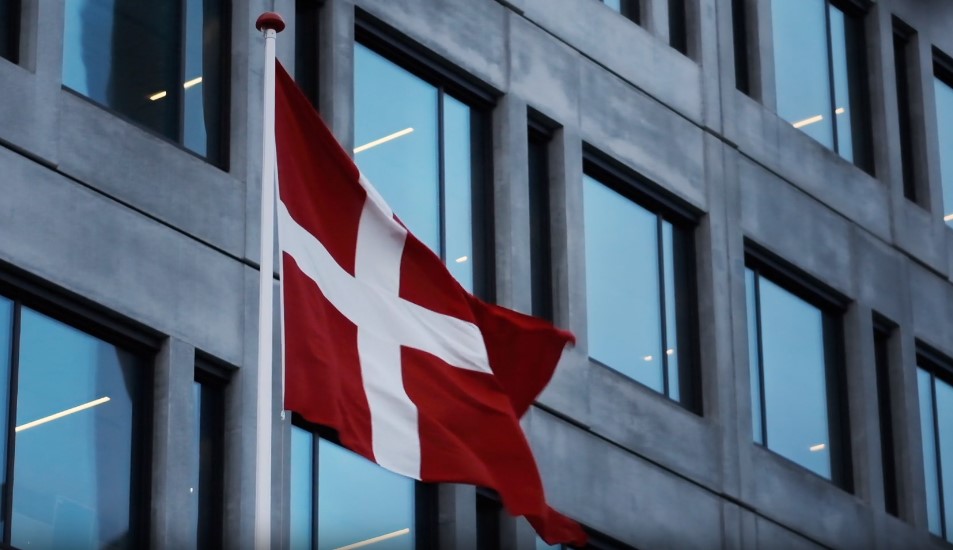Europe, with its rich tapestry of history and culture, is not just a testament to human civilization but also a hub of immense wealth. Drawing from my extensive exploration of European economic landscapes, I’ve been captivated by the varied and innovative economic strategies employed across this diverse continent. In this blog post, I’m excited to share my personal insights and the latest data on the richest countries in Europe as of 2024.
My journey into understanding the economies of Europe has often led me to focus on Gross Domestic Product (GDP), a crucial metric for assessing a nation’s economic health. This measure, representing the total value of all goods and services produced within a specific timeframe, reveals much about a country’s economic prowess. The World Population Review’s data shows that in 2020, the combined GDP of the six leading European economies each exceeded $1 trillion, cumulatively amounting to a colossal $13.833 trillion but let’s also take a look at the years of 2022 and 2024, and see how it compares to 3 years ago with data from World Bank.
Key Takeaways
- Overview: These countries, each with their unique economic strengths and strategies, collectively represent the diverse and dynamic economic landscape of Europe in 2024 and represent the wealth of Europe: Germany, United Kingdom, France, Italy, Russia, Spain, Netherlands, Turkey, Switzerland, Poland, Sweden, Belgium, Norway, Ireland, Austria, Denmark, and Romania.
- Small Nations, Big Impact: The economic success of smaller European countries like Monaco and Liechtenstein, often driven by niche sectors like finance and tourism, is remarkable. Their ability to leverage unique strengths despite their size is a powerful reminder that in economics, as in life, size isn’t everything.
- Renewable Energy and Sustainability Focus: The emphasis on renewable energy and sustainability in countries like Denmark and Spain is not just about economic numbers but reflects a deeper commitment to the planet’s future. This shift towards green energy is a significant step in balancing economic growth with environmental responsibility.
- Europe’s Economic Resilience and Innovation: The overall economic landscape of Europe, with its mix of industrial might, financial acumen, and innovative sectors, demonstrates a continent that is constantly evolving and adapting. This resilience and capacity for innovation are crucial as Europe faces future challenges like climate change, technological advancements, and global economic shifts.
Europe’s Economic Titans: A 2024 GDP Analysis
- Germany – $4.07 trillion
- United Kingdom – $3.07 trillion
- France – $2.78 trillion
- Italy – $2.01 trillion
- Russia – $1.84 trillion
- Spain – $1.4 trillion
- Netherlands – $991.11 billion
- Turkey – $905.99 billion
- Switzerland – $807.1 billion
- Poland – $688.18 billion
In my exploration of Europe’s economic landscape, I’ve been particularly intrigued by the diverse ways these countries generate wealth. Here’s a closer look at the top 10 wealthiest European countries in 2024, based on their GDP as reported by the World Bank, and my personal insights into their economic strengths.
1. Germany: Engineering Excellence and Export Prowess
- GDP: $4.07 trillion by World Bank
- Key Industries: Automotive, Machinery, Chemicals
Germany’s economic strength is deeply rooted in its world-class engineering and manufacturing sectors. The country’s focus on high-quality exports, particularly in the automotive industry, is a major contributor to its wealth. As highlighted by Deutsche Welle, Germany’s export-oriented economy is a key factor in its economic success. While my extensive travels, when I was visiting Germany, you could just breath the air, and see that the quality of life here is among the best on the Old Continent.
2. United Kingdom: A Diverse Economic Landscape
- GDP: $3.07 trillion by World Bank
- Key Industries: Financial Services, Pharmaceuticals, Technology
The UK’s economic landscape is remarkably diverse. London’s role as a global financial hub is central to the UK’s economic strength. The country’s commitment to sectors like pharmaceuticals and technology also plays a crucial role, as noted in reports by the Financial Times.
3. France: Tradition Meets Innovation
- GDP: $2.78 trillion by World Bank
- Key Industries: Luxury Goods, Tourism, Technology
France’s economy is a fascinating blend of traditional industries like luxury goods and tourism, and innovative sectors such as technology and renewable energy. The luxury sector, including brands like LVMH, is a significant economic driver, as detailed in publications like The Economist. Among my multiple visits to the country of wine and love, you could just look at its beauties and see that life here must be on another level.
4. Italy: Cultural Heritage and Industrial Might
- GDP:$2.01 trillion by World Bank
- Key Industries: Fashion, Automotive, Tourism
Italy’s rich cultural heritage is a major attraction for tourists, contributing significantly to its economy. Additionally, its fashion and automotive industries are renowned globally. Italy’s luxury fashion sector, as reported by Reuters, is a testament to its economic strength.
5. Russia: Natural Resources and Energy
- GDP: $1.84 trillion by World Bank
- Key Industries: Oil and Gas, Mining, Agriculture
Russia’s immense natural resources, especially its oil and gas reserves, form the backbone of its economy. The nation’s emphasis on exporting these resources has significantly influenced its economic standing on the global stage. This strategy has not only bolstered Russia’s GDP but also positioned it as a major player in the global energy market says the World Bank. The country’s success in leveraging its natural resources is evident in its status as one of the world’s top oil producers and exporters, thing u can’t not notice while u visit this majestic place.
6. Spain: Tourism and Renewable Energy
- GDP: $1.4 trillion by World Bank
- Key Industries: Tourism, Renewable Energy, Agriculture
Spain’s economy is significantly enhanced by its dynamic tourism sector, which is a major contributor to the nation’s GDP. The country’s rich cultural heritage, diverse landscapes, and pleasant climate make it a favorite destination for millions of tourists each year. Spain’s increasing investment in renewable energy represents a strategic shift towards more sustainable economic practices as per OECD. This commitment to green energy is not only diversifying Spain’s economic base but also positions it as a forward-thinking leader in environmental sustainability within Europe.
7. Netherlands: Trade and Innovation
- GDP: $991.11 billion by World Bank
- Key Industries: High-Tech Exports, Agriculture, Energy
The Netherlands’ economy is notably propelled by its emphasis on high-tech exports, including advanced machinery and technology products, which are in high demand globally. The country’s innovative approach to agriculture, characterized by high efficiency and sustainability, sets a global standard according to the Netherlands Foreign Investment Agency (NFIA). The Netherlands’ strategic trade policies, fostering both innovation and international commerce, have been instrumental in its economic success, making it a significant player in the global market.
8. Turkiye: Diverse Economy and Strategic Location
- GDP: $905.99 billion by World Bank
- Key Industries: Textiles, Automotive, Tourism
Turkey’s diverse economy and strategic location as a bridge between Europe and Asia play a crucial role in its economic success. The country’s textile and automotive industries are particularly noteworthy. During my summer visits to this beautiful county, the well-being and hospitality of its people breathe the quality air of life.
9. Switzerland: Banking and Pharmaceuticals
- GDP: $807.1 billion by World Bank
- Key Industries: Banking, Pharmaceuticals, Machinery
Spain’s economy is significantly bolstered by its thriving tourism industry, which attracts millions of visitors annually, drawn to its rich cultural heritage, beautiful landscapes, and warm climate. Additionally, Spain’s increasing emphasis on renewable energy marks a strategic shift towards sustainable economic practices according to the International Energy Agency (IEA). This commitment to green energy not only diversifies the nation’s economy but also positions Spain as a leader in sustainable development within Europe.
10. Poland: Emerging Economic Power
-
- GDP: $688.18 billion by World Bank
- Key Industries: Manufacturing, IT Services, Agriculture
Poland’s growing economy is marked by its strong manufacturing sector and emerging IT services industry as it was noted by the EU Council. The country’s economic policies have been instrumental in its recent growth.
7 More Worth Mention Countries
11. Sweden: Auto and Telecom Sectors Thriving
GDP: $585.94 billion by World Bank
Economic Overview
Sweden’s economy is characterized by a strong emphasis on technology and innovation. The country is known for its advanced industrial base, with key sectors including telecommunications, automotive, and pharmaceuticals. Sweden’s commitment to research and development, as well as its robust welfare state, contribute to its high standard of living and economic stability Like any other Scandinavian country, during my visits, I was overwhelmed with hospitality and their way of life, you could just see prosperity in the air.
Key Industries
- Telecommunications
- Automotive
- Pharmaceuticals
12. Belgium: Logistic Miracle
GDP: $578.6 billion by World Bank
Economic Overview
Belgium’s economy benefits from its central location in Europe and its highly developed transport network noted by Business Belgium. The country has a diverse industrial and commercial base. Key sectors include manufacturing, particularly in machinery and equipment, as well as a strong service sector dominated by financial services and international trade.
Key Industries
- Manufacturing (Machinery and Equipment)
- Financial Services
- International Trade
13. Norway: Seafood And Oil Exports
GDP: $578.27 billion by World Bank
Economic Overview
Norway’s economy is heavily influenced by the oil and gas sector, which accounts for a significant portion of its GDP. The country also has a robust maritime sector and is one of the world’s largest exporters of seafood. Norway’s wealth fund, derived from its oil revenues, is the largest sovereign wealth fund in the world.
Key Industries
- Oil and Gas
- Maritime
- Seafood
14. Ireland: Pharma Tech Pioneer
GDP: $529.24 billion by World Bank
Economic Overview
Ireland’s economy is known for its strong growth, driven by the technology and pharmaceutical sectors. The country is a significant hub for multinational corporations, particularly in the tech industry, due to its favorable corporate tax rates and skilled workforce.
Key Industries
- Technology
- Pharmaceuticals
- Multinational Corporations
15. Austria: Agricultural Miracle
GDP: $471.40 billion by World Bank
Economic Overview
Austria’s economy is well-balanced with a mix of industrial, service, and agricultural sectors. The country is known for its high quality of life and strong social market economy. Key industries include machinery, metallurgy, and tourism.
Key Industries
- Machinery
- Metallurgy
- Tourism
16. Denmark: Renewable Country
GDP: $395.40 billion by World Bank
Economic Overview
Denmark’s economy is characterized by a high degree of flexibility and a focus on renewable energy and sustainability. The country has a strong agricultural sector and is a world leader in wind energy production. Denmark’s social welfare system and business environment are also notable.
Key Industries
- Renewable Energy (Wind Energy)
- Agriculture
- Pharmaceuticals
17. Romania: Growing IT Sector
GDP: $301.26 billion by World Bank
Economic Overview
Romania’s economy has seen rapid growth in recent years, driven by its industrial and service sectors. The country has significant energy resources, including oil, gas, and coal. Romania’s IT sector is also growing rapidly, making it an emerging hub for technology in Eastern Europe according to the ITA. I just Love the energy of that Balkan nation, during my visits, to the area of Transilvania, you could see how they made from scratch something that you can be proud of.
Key Industries
- Energy (Oil, Gas, Coal)
- Information Technology
- Manufacturing
GDP vs. GDP Per Capita
While GDP is a valuable metric, it tends to favor larger countries because it doesn’t take into account the number of people or businesses contributing to its total. For instance, in 2020, Poland had a population of nearly 38 million, about 25.9% of Russia’s population. Yet, Poland’s GDP was 40% of Russia’s, suggesting that Poland’s economy was more productive.
To gain a clearer understanding of such situations, economists often look at two additional measures: GDP per capita and GNI per capita. GDP per capita is calculated by dividing the GDP by the population of the country.
This calculation often leads to a significantly different ranking of economies you could look up to similar stats on the World Population Review.
Europe’s Wealthiest Nations in 2024: A Ranking by GDP Per Capita
- Luxembourg – $146,259
- Ireland – $139,844
- Switzerland – $87,522
- Norway – $82,496
- San Marino – $74,970
- The Netherlands – $72,363
- Denmark – $72,167
- Iceland – $69,811
- Austria – $69,399
- Andorra – $67,735,
| Rank | Country | GDP per Capita (PPP) | Population (Millions) |
|---|---|---|---|
| 1 | Luxembourg | 146,259.82 | 0.619 |
| 2 | Ireland | 139,844.18 | 4.941 |
| 3 | Switzerland | 87,522.06 | 8.574 |
| 4 | Norway | 82,496.19 | 5.347 |
| 5 | San Marino | 74,970.01 | 0.033 |
| 6 | Netherlands | 72,363.53 | 17.33 |
| 7 | Denmark | 72,167.19 | 5.818 |
| 8 | Iceland | 69,811.28 | 0.361 |
| 9 | Austria | 69,399.47 | 8.877 |
| 10 | Andorra | 67,735.00 | 0.077 |
| 11 | Germany | 65,865.26 | 83.13 |
| 12 | Sweden | 65,459.17 | 10.28 |
| 13 | Belgium | 64,125.26 | 11.48 |
| 14 | Finland | 61,009.05 | 5.52 |
| 15 | Malta | 59,860.12 | 0.502 |
| 16 | France | 58,420.55 | 67.05 |
| 17 | United Kingdom | 57,821.90 | 66.83 |
| 18 | Italy | 52,825.32 | 60.29 |
| 19 | Slovenia | 52,517.70 | 2.087 |
| * | Cyprus | 52,057.17 | 1.198 |
| 20 | Czech Republic | 51,328.62 | 10.66 |
| 21 | Estonia | 48,644.22 | 1.326 |
| 22 | Spain | 48,594.47 | 47.07 |
| 23 | Lithuania | 48,335.64 | 2.786 |
| 24 | Hungary | 44,434.66 | 9.769 |
| 25 | Poland | 44,249.39 | 37.97 |
| 26 | Portugal | 43,948.63 | 10.26 |
| * | Turkey | 40,882.73 | 83.42 |
| 27 | Romania | 40,672.73 | 19.35 |
| 28 | Croatia | 40,484.51 | 4.067 |
| 29 | Latvia | 40,197.50 | 1.912 |
| 30 | Greece | 38,607.64 | 10.71 |
| * | Kazakhstan | 32,947.04 | 18.51 |
| 31* | Russia | 32,390.60 | 144.3 |
| 32 | Bulgaria | 31,302.64 | 6.975 |
| 33 | Montenegro | 27,616.12 | 0.622 |
| 34 | Serbia | 25,718.88 | 6.944 |
| 35 | Belarus | 22,644.41 | 9.466 |
| * | Georgia | 21,379.20 | 3.72 |
| 36 | North Macedonia | 21,103.73 | 2.083 |
| 37 | Albania | 19,009.87 | 2.854 |
| 38 | Bosnia and Herzegovina | 18,956.54 | 3.301 |
| * | Azerbaijan | 18,310.45 | 10.02 |
| * | Armenia | 18,007.90 | 2.957 |
| 39 | Moldova | 17,779.16 | 2.657 |
In 2022, Europe’s landscape of wealth was dominated by a mix of small, affluent micronations and robust, larger economies. The top ten richest countries, as measured by GDP per capita in current US dollars according to the World Bank, present a fascinating picture of economic prosperity.
This list is headlined by Luxembourg, followed closely by other predominantly Northern European nations as it was stated on the World Atlas article. Interestingly, smaller territories like Bermuda, the Cayman Islands, and Greenland also showcased impressive economic performance, likely influenced by their smaller populations and, in some cases, their roles as international tax havens.
1. Luxembourg: The Crossroads of European Prosperity
-
- Economic Overview: Luxembourg, a beacon of wealth in Europe, boasts a remarkable GDP per capita of $146,259. This landlocked nation is celebrated for its high living standards and robust economy.
- Revenue Sources: Luxembourg thrives as a financial hub, with its strategic location enhancing its appeal in international business, transport services, and logistics.
- Economic Insights: The country’s political stability and efficient taxation system have cultivated a fertile ground for economic growth and foreign investment according to IMF.
2. Ireland: The Celtic Tiger’s Roar
-
- Economic Overview: Ireland, with a GDP per capita of $139,844, exemplifies economic resilience and growth. Known for its hardworking populace and stable governance, Ireland continues to prosper.
- Revenue Sources: Ireland’s economic surge is fueled by favorable business taxation policies and EU membership, attracting global companies and bolstering employment stated by the EU.
- Economic Insights: The Irish spirit of creativity and innovation has been pivotal in driving the nation’s economic prosperity and cultural richness.
3. Switzerland: The Summit of Financial Success
-
- Economic Overview: Switzerland, with a GDP per capita of $87,522, is synonymous with wealth and economic stability. The nation’s progressive policies and skilled workforce are key to its success.
- Revenue Sources: A leader in banking, manufacturing, and technology, Switzerland benefits from a tax system that promotes savings and investment according to the US GOV.
- Economic Insights: The country’s commitment to research, development, and political neutrality has solidified its position as a global economic powerhouse.
4. Norway: The Northern Light of Prosperity
-
- Economic Overview: Norway shines with a GDP per capita of $82,496, underpinned by its vast natural resources and commitment to innovation and education.
- Revenue Sources: The nation’s wealth is significantly derived from its oil reserves, hydropower, and minerals.
- Economic Insights: Norway’s focus on transparency, corporate governance, and a skilled labor force has made it an attractive destination for foreign investment as you can see in the IMF statemant.
5. San Marino: The Hidden Gem of Enterprise
-
- Economic Overview: San Marino, with a GDP per capita of $74,970, is a testament to the power of strategic economic planning and government initiatives.
- Revenue Sources: The nation’s prosperity is driven by low taxation, strong international investment, and advanced industries.
- Economic Insights: San Marino’s focus on education, infrastructure, and technological advancement has positioned it as a hub for innovation and business growth.
6. The Netherlands: The Dutch Engine of Economic Might
-
- Economic Overview: The Netherlands, boasting a GDP per capita of $72,363, is a paradigm of economic advancement and quality of life stated by the World Atlas.
- Revenue Sources: Its success stems from a diversified industrial base, a flourishing services sector, and a strategic position in global trade.
- Economic Insights: The nation’s robust infrastructure, skilled workforce, and comprehensive welfare system underpin its economic strength and societal well-being.
7. Denmark: The Scandinavian Beacon of Economic Harmony
-
- Economic Overview: Denmark, with a GDP per capita of $72,167, is a model of economic efficiency and social welfare.
- Revenue Sources: The country’s prosperity is fueled by a sound banking system, innovation, and a highly educated population.
- Economic Insights: Denmark’s extensive welfare system, supported by high taxation, ensures a high standard of living and continuous economic growth.
8. Iceland: The Arctic Oasis of Economic Stability
-
- Economic Overview: Iceland, with a GDP per capita of $69,811, stands out for its robust economy and sustainable growth.
- Revenue Sources: The nation’s economic stability is anchored in its high savings rate, prudent banking policies, and a thriving fishing industry.
- Economic Insights: Iceland’s focus on sustainable practices and resilience in the face of global challenges underscores its economic success according to the Link Springer.
9. Austria: The Alpine Powerhouse of Innovation
-
- Economic Overview: Austria, with a GDP per capita of $69,399, is a testament to the strength of a diversified and well-managed economy.
- Revenue Sources: The country’s wealth is built on natural resources, strategic location, and a commitment to fiscal responsibility.
- Economic Insights: Austria’s investment in innovation, infrastructure, and a business-friendly environment has made it a competitive force in Europe as stated by Newsweek.
10. Andorra: The Pyrenean Peak of Economic Growth
-
- Economic Overview: Andorra, with a GDP per capita of $67,735, showcases a unique economic model that blends tourism and strategic fiscal policies.
- Revenue Sources: The country’s prosperity is bolstered by its tourism sector, low taxes, and attractive conditions for foreign investment.
- Economic Insights: Andorra’s strategic location and strong legal framework for property rights have made it an appealing destination for business and trade.
European Economy’s Resilience Amid Global Challenges
The European economy demonstrated remarkable resilience in the first quarter of 2024, defying global challenges. This period was marked by moderate growth, fueled by a combination of lower energy prices, easing supply constraints, and a robust labor market.
These factors collectively dispelled fears of a recession. The start of 2024 exceeded expectations, leading to an optimistic revision of growth forecasts for the EU economy.
The projections now stand at 1.0% for 2024 and 1.7% for 2024, surpassing the winter interim forecast figures of 0.8% and 1.6%, respectively. The euro area mirrored this positive trend, with GDP growth forecasts adjusted to 1.1% for 2024 and 1.6% for 2024.
Inflation Trends and Economic Adjustments
Inflation forecasts have been revised upwards due to persistent core price pressures. The euro region anticipates inflation rates of 5.8% in 2024 and 2.8% in 2024. Despite the ongoing conflict in Ukraine and the energy crisis, the European economy has successfully averted a recession. This success is attributed to the swift diversification of energy sources and reduced gas consumption.
The European Commission’s “Spring 2024 Economic Forecast” highlights these achievements. However, challenges persist, as wage growth lags behind inflation, potentially impacting private consumption. High inflation may lead to tighter financing conditions.
The European Central Bank and other central banks are expected to conclude their interest rate hikes soon, but recent financial sector turbulence could complicate access to credit, slowing down investment growth, especially in residential sectors.
EU’s Energy Strategy and Market Response
The EU has effectively reduced its reliance on Russian gas, benefiting both businesses and consumers. However, the financial sector’s instability poses risks to credit access, potentially slowing investment growth. The Guardian, quoted the European Commission on May 15, reported:
“The EU economy is managing the adjustment to the shocks unleashed by the pandemic and Russia’s aggression of Ukraine remarkably well. Last year, the EU successfully managed to largely wean itself off Russian gas.”
S&P Global’s Economic Outlook for the Eurozone
Looking at the S&P Global’s “Economic Outlook Eurozone Q2 2024” report indicates a solid start for the eurozone economy in 2024 but warns of a potential mild recession. The GDP growth forecast for 2024 has been revised down from 1.4% to 1.0%, with a return to potential growth not expected until 2025. Inflation is projected to reach its target by early 2025, with core inflation following later in the year.
The European Central Bank may maintain higher interest rates longer, potentially reaching a 3.50% deposit facility rate by summer. While restrictive monetary policy will impact domestic demand, real positive interest rates are anticipated in 2024. Consumer spending is expected to improve, supported by government measures, wage increases, and disinflation.
External demand should benefit from China’s reopening, and public investment could mitigate the cyclical slowdown and enhance long-term GDP. The overall outlook is complex but not dire.
Investment Trends in Uncertain Times
In light of the uncertain economic forecast, investors are turning to European companies like Novo Nordisk A/S (NYSE:NVO), ASML Holding N.V. (NASDAQ:ASML), and Novartis AG (NYSE:NVS) to safeguard their investments.
Impact of the Russia-Ukraine Conflict on European Countries
The Russian invasion of Ukraine has significantly impacted the European Union, particularly in the areas of energy and food markets stated by European Consilium. The EU countries have been closely coordinating actions to ensure energy supply and maintain affordable prices. Here are some key points from the information gathered:-
The war’s impact extends beyond energy markets, affecting global food security and affordability. The EU’s common agricultural policy ensures food availability, but the reduction in imports from Ukraine impacts feed prices and the food industry. The EU is working to counter these challenges and support global food security.
In terms of mobility, the conflict has affected the movement of people and goods across the EU, with implications for fuel supplies, prices, and logistical challenges according to European Parliment. The EU has taken measures to support Ukrainian refugees and ensure the resilience of transport systems during this crisis.
Wealthiest European Nations by 2024 GNI Per Capita (Atlas Method)
Several non-country regions also show strong performance in this category, such as Bermuda ($117,098), the Cayman Islands ($91,393), and Greenland ($54,471). This can be attributed to various factors, including the ease with which per-capita figures can be influenced in smaller populations and the fact that many of these places are (or have been) global tax havens, potentially inflating GDP figures artificially also stated by the World Population Review.
The last metric, Gross National Income (GNI), can be seen as a counterpart to GDP according to Brookings. While GDP calculates the value of goods and services produced and “exported” from a country’s economy (though most are “exported” domestically), GNI accounts for the total income “imported” into the country from these goods and services. GNI also factors in money that enters or exits the country via international business dealings, reducing the extent to which the metric is skewed by activities related to tax shelters.
- Norway – $95,510
- Luxembourg – $91,200
- Switzerland – $89,450
- Ireland – $81,070
- Denmark – $73,200
- Iceland – $68,220
- Sweden – $62,990
- Netherlands – $57,430
- Finland – $54,360
10 Poorest European Nation by 2024 GDP Per Capita
As someone interested in the economic landscapes of different regions, I find it particularly enlightening to explore the varying levels of prosperity across Europe. In 2024, a continent known for its rich history and diverse cultures presents a stark contrast in economic standings among its nations.
This becomes especially apparent when we examine the GDP per capita, a key indicator of economic health and citizen well-being. Below, I’ve compiled a list of the 10 poorest European countries by their 2024 GDP per capita, backed up by the World Bank database.
- Ukraine – $12,671.2
- Kosovo (partially recognized) – $14,723.4
- Moldova – $15,238.1
- Albania – $18,551.7
- Georgia – $20,113.4
- North Macedonia – $20,161.8
- Bosnia And Herzegovina – $20,376.9
- Belarus – $22,590.6
- Serbia – $23,911.2
- Montenegro – $26,984.1
Comparison of Poorest European and Asian Countries
- Economic Disparity: The poorest European countries, such as Ukraine, Kosovo, and Moldova, generally have higher GDP per capita compared to the poorest in Asia, like Afghanistan, Nepal, and Tajikistan. This indicates a wider economic disparity in Asia.
- Regional Instability: Many of the poorest Asian countries face significant political and social instability, which has a direct impact on their economies. For instance, Afghanistan has been affected by decades of conflict, which is a key factor in its economic challenges.
- Development Challenges: Both regions face development challenges, but the nature of these challenges can be quite different. In Europe, issues like transitioning economies, governance, and integration with the broader European economy are prevalent. In contrast, many Asian countries grapple with basic infrastructure needs, political instability, and extreme poverty.
- International Aid and Investment: The nature and extent of international aid and investment also differ. European countries often benefit from proximity to and relationships with wealthier European nations, while Asian countries may rely more on broader international aid programs.
- Urbanization and Industrialization: The level of urbanization and industrialization is another point of difference. European countries, even the poorer ones, tend to have higher urbanization and industrialization levels compared to many Asian countries, impacting economic activities and opportunities.
My Methodology
My study aimed to analyze the Richest Countries Of Europe by leveraging comprehensive data and resources primarily from the World Bank. The World Bank, known for its extensive and reliable global data, provided a robust foundation for our analysis.
Data Collection
- World Bank Database Access: I accessed the World Bank’s extensive database, which offers a wide range of global economic and development data. This database is recognized for its accuracy and comprehensiveness, making it an ideal primary source for our research.
- Selection Criteria: Data relevant to our study was selected based on latest stats that World Bank provides. This ensured that our analysis was focused and relevant to our research objectives.
- Supplementary Sources: While the World Bank data formed the core of our research, supplementary data from other credible sources, were also considered to provide additional perspectives and support.
FAQ
How has the COVID-19 pandemic affected the economies of these European countries?
The COVID-19 pandemic has had a significant impact on all economies globally, including those in Europe also stated by the World Bank. The extent of the impact varies by country, depending on factors like economic structure, government response, and healthcare infrastructure. For instance, countries heavily reliant on tourism, like Spain and Italy, faced substantial challenges.
What role does the European Union play in the economies of its member states?
The European Union (EU) plays a crucial role in shaping the economies of its member states through policies on trade, agriculture, and regional development. The EU’s single market facilitates free movement of goods, services, capital, and labor among member states, enhancing economic integration and growth.
How are European countries addressing climate change and its economic implications?
Many European countries are at the forefront of addressing climate change, with policies focusing on reducing carbon emissions and promoting renewable energy. Countries like Denmark and Germany are leading in wind energy, while Norway’s investment in electric vehicles is notable. These initiatives also open new economic opportunities and job creation in green industries.
What is the significance of the technology sector in Europe’s economy?
The technology sector is increasingly important in Europe, with countries like Ireland, Finland, and Sweden becoming hubs for tech companies and startups. This sector drives innovation, economic growth, and competitiveness on the global stage.
How do smaller European countries like Monaco and Liechtenstein achieve such high GDP per capita?
Smaller European countries often have specialized economies that focus on niche sectors like finance (Liechtenstein) or tourism and luxury services (Monaco). Their small populations also mean that high revenues translate into very high GDP per capita figures.
What challenges do European economies face in the coming years?
European economies face several challenges, including aging populations, the need for sustainable energy transitions, managing immigration, and maintaining economic competitiveness in a rapidly changing global landscape.
How does Brexit impact the UK’s economy and its relations with other European countries?
Brexit has significant implications for the UK’s economy, affecting trade, investment, and labor movement between the UK and EU countries according to the UK Times. It necessitates new trade agreements and has led to adjustments in economic policies and relations with both EU and non-EU countries.
Are there any emerging economic sectors in Europe to watch out for?
Emerging sectors in Europe include green energy, biotechnology, and artificial intelligence (AI). These sectors are expected to drive future growth and innovation.
How do European countries balance economic growth with social welfare?
Many European countries, like Sweden and Denmark, are known for balancing economic growth with extensive social welfare programs. This balance is achieved through progressive taxation, comprehensive social services, and policies focused on income equality and quality of life.
Can Europe maintain its economic position in the face of rising economies like China and India?
Europe faces the challenge of maintaining its economic position globally. This requires continued innovation, investment in education and technology, and strategic trade and diplomatic relations. Europe’s ability to adapt to changing global dynamics will be key to its future economic standing.
Conclusion
The economic landscape of Europe is as diverse as its cultural heritage. From the industrial might of Germany to the financial prowess of Luxembourg, these countries demonstrate a range of strategies for achieving economic success. As we look towards the future, understanding these economies provides valuable lessons in resilience, innovation, and economic planning.
Disclaimer
Please note that the insights and data presented in this blog post are based on my personal observations and interpretations, supplemented by various online sources. The information provided is intended for general informational purposes and should not be considered as financial advice. The economic landscapes and data are subject to change, and I encourage readers to consult additional sources for the most current information. The views expressed are my own and do not necessarily reflect the official policy or position of any agency or company.

